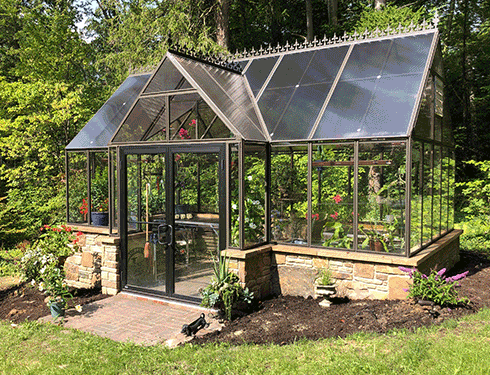Smooth Assimilation: Monarch Greenhouse Installation Utah Specialist Touch
Wiki Article
The Future of Greenhouses: Advancements in Lasting Agriculture
Are you curious regarding the future of greenhouses and exactly how they are changing lasting farming? From advanced climate control systems to vertical farming techniques, water-efficient irrigation methods, renewable energy combination, and clever information analytics, these innovations are transforming the way we expand our food.Advanced Environment Control Equipment
To attain optimal expanding problems, you can rely upon the innovations in greenhouses with advanced environment control systems. These systems have reinvented the means we cultivate crops, supplying a regulated atmosphere that contributes to plant growth. With these innovative systems, you can now manipulate temperature level, moisture, light levels, and even CO2 focus to develop the best conditions for your plants to thrive.Among the vital attributes of these sophisticated climate control systems is their ability to manage temperature level. By utilizing sensors and automated controls, the greenhouse can readjust the temperature level based on the specific demands of the plants. This makes sure that they are never exposed to severe warmth or cool, which can be destructive to their development.
Humidity control is an additional vital element of these systems. By maintaining the excellent moisture levels, you can protect against problems such as mold, mold, and disease from influencing your crops. These systems can also regulate the amount of light that gets to the plants, making certain that they get the optimum amount for photosynthesis.
Furthermore, progressed climate control systems can also manipulate carbon dioxide concentrations. By boosting the levels of carbon dioxide in the greenhouse, you can enhance plant growth and productivity. This is particularly advantageous in locations with low all-natural carbon dioxide degrees.
Upright Farming Methods
One essential upright farming strategy is making use of stacked growing systems. Stacked growing systems are frequently made use of in city locations where space is limited.One prominent technique is called vertical hydroponics, where plants are grown in nutrient-rich water without soil. This method is very reliable as it reduces water usage by up to 90% compared to standard farming approaches. Additionally, because the plants are expanded inside, they are protected from insects and illness, minimizing the requirement for chemicals.
One more method is aeroponics, which includes suspending the plant roots in a haze or air setting. This technique permits ideal nutrient absorption and oxygenation, leading to faster growth and higher yields. Aeroponics additionally makes use of much less water than standard farming and can be applied in upright systems, making it a preferred option for vertical farming.
Water-efficient Irrigation Techniques
When it comes to carrying out water-efficient irrigation approaches in lasting agriculture,Making the most of water preservation is crucial. With worldwide water shortage coming to be a pressing issue, it is crucial to develop ingenious techniques that maximize water use in greenhouse operations.One promising method is drip watering, which delivers water directly to the plant roots, reducing waste and evaporation. By utilizing a network of tubes with little emitters, water is used slowly and specifically, guaranteeing that plants receive the required dampness without excess drainage.
An additional reliable technique is making use of dirt wetness sensing units. These tools determine the moisture web content in the dirt and supply real-time information to farmers. By monitoring the soil's dampness levels, farmers can properly determine when and exactly how much water to apply, avoiding over-irrigation.
Furthermore, the implementation of rainwater harvesting systems is obtaining popularity in greenhouse farming. Collecting rain from rooftops and storing it in tanks enables farmers to utilize this natural resource for watering functions, reducing dependence on typical water sources.
Last but not least, the fostering of automated watering systems can significantly improve water effectiveness. These systems utilize sensors to identify dirt wetness levels and climate problems, readjusting watering timetables appropriately. By enhancing water usage based upon real plant demands, these systems can reduce water waste and promote sustainable farming methods.
Renewable Resource Combination
Renewable energy integration in greenhouses supplies several advantages, including reduced operating expenses and decreased dependence on non-renewable power resources. The created power can after that be utilized to run various operations within the greenhouse, such as home heating, air flow, and lighting systems. These turbines harness wind look at this web-site power and transform it into electrical power, which can be made use of to supplement the energy requirements of the greenhouse.Smart Data Analytics and Automation
To boost the efficiency of your greenhouse operations and maximize source usage, think about applying smart data analytics and automation. Smart information analytics entails collecting and examining information from numerous sensors and devices within your greenhouse.
This can moved here consist of automating the control of illumination, air flow, watering systems, and nutrient delivery. By automating these processes, you can ensure that your plants receive the right conditions and nutrients at the right time, without the need for constant manual intervention.
Furthermore, clever information analytics and automation can collaborate synergistically. The information gathered by sensors can be used to inform automated systems, allowing them to make real-time changes based upon the present conditions. This combination of information analytics and automation can bring about a lot more exact and reliable resource appropriation, inevitably leading to higher returns and far better crop quality.
Verdict
To conclude, the future of greenhouses in sustainable agriculture looks encouraging. With sophisticated climate control systems, upright farming methods, water-efficient irrigation approaches, and sustainable energy assimilation, greenhouses are ending up being more reliable and ecologically friendly. Additionally, making use of wise information analytics and automation additionally enhances performance and decreases waste. These innovations are leading the way for an extra sustainable and reliable agricultural industry, making certain a greener and healthier future for all.
By maximizing water usage based on actual plant requirements, these systems can minimize water waste and advertise lasting farming techniques.

Report this wiki page